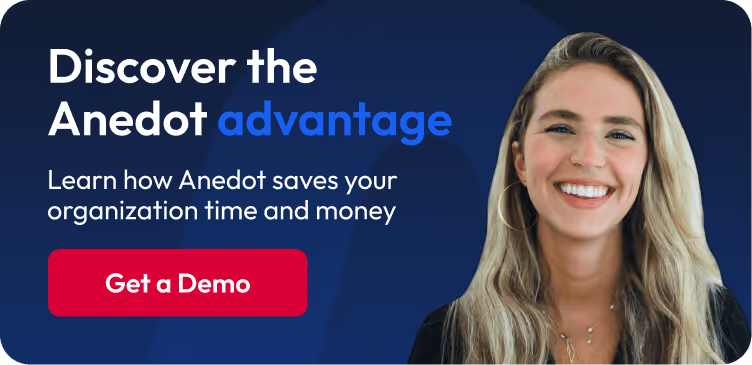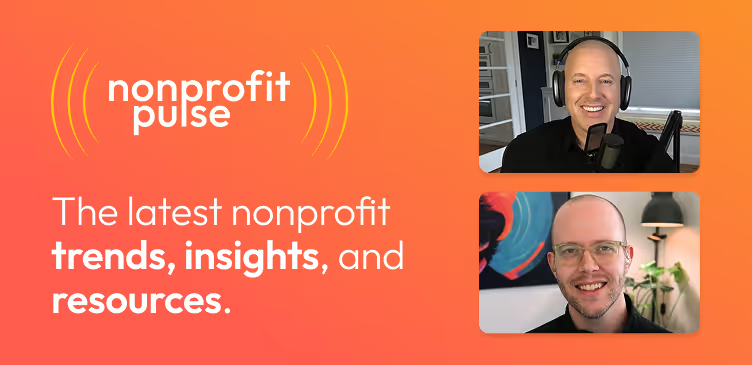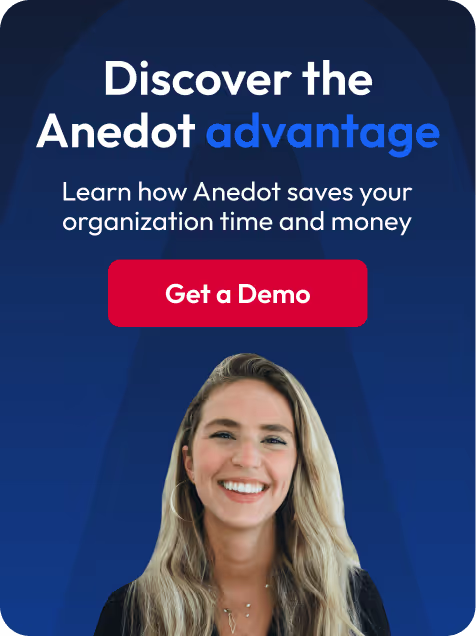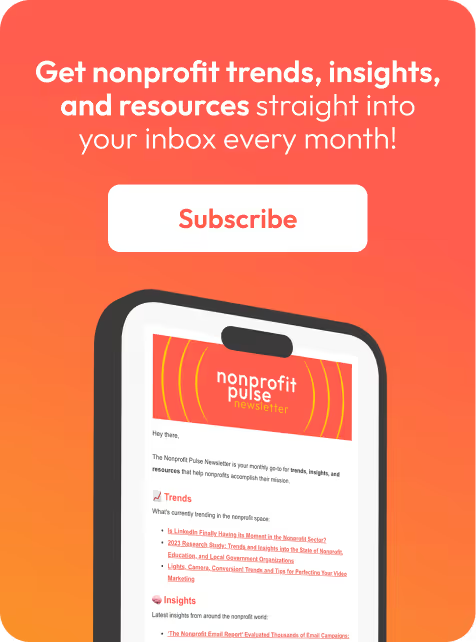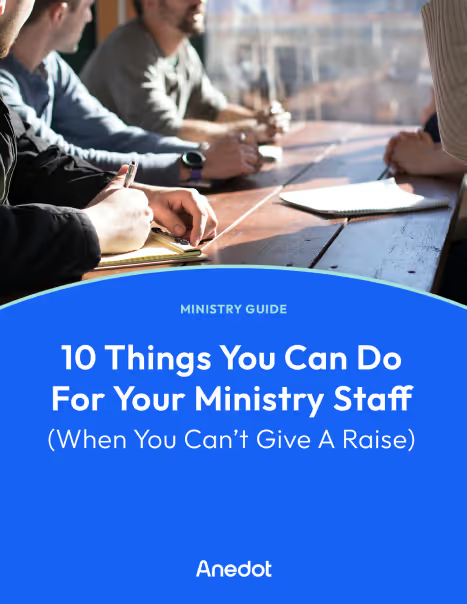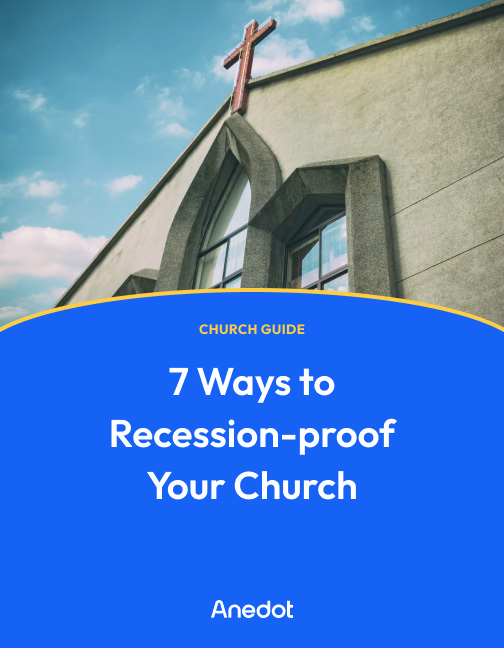Podcast episode transcript ↓
Josh:
Diversifying your nonprofit’s fundraising revenue is a well-known best practice.
However, many nonprofits struggle to begin or grow their major gifts fundraising.
So, how do you get started, or if you have a program already, how do you grow it in a sustainable way?
I’m Josh with Anedot, and welcome to Nonprofit Pulse where we explore trends, insights, and resources that help nonprofits accomplish their mission.
On this episode we are joined by Stephanie Schwartz on the topic of major gifts and how nonprofits can lean into major gift fundraising.
For almost 20 years, Stephanie has worked inside and outside of nonprofits, bringing expertise in leadership, fundraising, and major gifts.
She is the CEO of Little Bean Group, providing fundraising strategy, support, learning and development, and thought leadership to nonprofits and institutions.
Hey Stephanie, thanks so much for coming back on the podcast. Super excited to talk major gifts today.
Stephanie:
Thank you so much for having me. It's so great to be back.
What are major gifts and why are they important?

Josh:
Yeah, so let's start from the beginning and maybe define our terms.
What are major gifts and why are they important for nonprofits?
Stephanie:
Sure. So not to drop a bombshell at the outset. But as I was thinking about this recording, I started to ask myself the question, why do we call them major gifts?
That’s so arbitrary. Why don’t we call them big gifts? Why don't we call them transformative gifts? Why don’t we just call them gifts?
But let's go with the fundraising jargon because we all use it.
So major gifts are gifts that are significant to an organization that help the organization to achieve its mission and goals and that are really meaningful in helping them do that.
So for some organizations, it could be $1,000 for know, for a smaller organization, it could be $10,000, $50,000.
I worked at a large university where in some ways a major gift was considered $100,000. That's what was really needed to move the needle and create impact.
How do nonprofit leaders generally view major gifts and the development work behind major gifts?

Josh:
Yes. So how do nonprofit leaders generally view major gifts and even the work behind major gifts in that development area?
Stephanie:
Yeah, so major gifts are very important because they're seen to be the gifts that move the needle forward.
So typically in organizations, there are major gift officers, again, a somewhat random, arbitrary title.
But you know, staff who are trained and go out and have conversations and build relationships with donors to deepen their relationship with the organization and ultimately ask them to invest in the organization at the major gift level, which again, can range, I would say anywhere from $1,000 to $50,000 is probably what is most common.
Josh:
Yeah, and we've got an audience of nonprofit leaders from small nonprofits to medium sized or large nonprofits.
Where do you see nonprofits really in their maturity and their timeline as an organization? Where do they start implementing more of a focus on major gifts?
Is it after they receive a major gift out of the blue and they get inspired, or is it more of a plan, you know, 3 to 5 years in?
What do you see out there?
Stephanie:
So I think it would behoove organizations to look at what they're doing.
Their programs, their, and ultimately their impact and say and decide how much does it really cost to create the kind of change and impact that we want to see?
So I serve on the board of a human services, essential services organization, and let say for that organization it costs $50, I’m sorry, $50,000 for them to administer one of their key programs, which distributes important items to underserved families in need.
So $50,000 then becomes a really significant amount of money because it's really the linchpin of the key programmatic aspects that the organizations are embarking upon.
So I think that sets a sort of threshold to start to think about, okay, what is a major gift, do we think as an organization we can actually secure many gifts of $50,000 or more?
It's probably not reasonable for a younger organization, but do we think that we could secure five gifts of $10,000, which would sum to $50,000?
The amount we've determined, you know, really helps to move our needle and our programs forward.
So I think starting from the beginning and almost like the zero based budgeting approach is helpful.
I think oftentimes organizations will receive a really big gift and they say, oh we've received a major gift.
It's just a big gift, right? You can call it whatever you want.
But if it doesn't fit into how the organization has structured its fundraising strategy to help it achieve its goals, then it's not really a meaningful number.
Could be any number. It just happens to be a big gift.
What major gifts development strategies and tactics do you recommend to your clients?

Josh:
Got it. And so thinking through tactics and strategies, I'm sure there's many out there. But what do you recommend to your clients?
Stephanie:
So I talk with my clients about using the term major gift and the associated gift level as really the starting point for conversation with donors.
I often find that when you're meeting with new and prospective donors, they don't necessarily know what's expected of them. They don't really know how the organization works, how much money they raised.
And so I would always coach clients to say, you know, we often talk with people about gifts of $5,000 or more, which helps us do X and have Y impact.
So I think that contextualizing a major gift within the broader fundraising strategy is important and also using data to demonstrate what's the impact of a major gift.
Like why should somebody give $5,000 as opposed to $1,000.
In some ways, a major gift structure helps create almost like a ladder for fundraising strategies so you can start to build out gift levels and gift societies, you know, $1,000, $5,000, $10,000.
Whatever the amount may be and start to structure donor stewardship around that.
But I always advise clients that those amounts really need to actually be meaningful to the organization. They shouldn't just be random.
I serve on the board of an independent school here in D.C. where I live and the school gives out a significant amount of financial aid.
And so perhaps, and this is just a random example, perhaps $25,000 might be a major gift and that's the average financial aid package that's awarded to a student.
And so that's a meaningful number for the school.
So I think organizations need to look at themselves, their data, what they're doing in order to set strategies for securing major gifts and even before that, just determining major gift levels.
Josh:
Yeah. And you know, nonprofits are typically, I would say, unfortunately laggards when it comes to digital transformation and adopting new technology or even social media.
You know, a lot of nonprofits are not leveraging social media.
How have you seen digital tools and social media kind of evolve into or be implemented into major gifts work?
Have you seen that in the past few years?
Stephanie:
So digital tools are fantastic at building an audience, helping people learn about an organization, its mission, helping people connect to it before they become a donor, and certainly after they become a donor.
So they really are the foundation in many ways of all giving, whether we want to call it annual giving or major gift giving.
It's really the top of the funnel through which we start to identify people who are interested in the organization.
So it’s a really critical strategy both for identification and then helping people be informed, learn more about the organization and even on the back end after somebody makes a gift.
And there's so much great stewardship and information sharing that can come from, come through social media.
So it’s a really important tool when it's used in tandem with relationship building and personal contact with staff and leadership and board members from the organization.
It’s not a substitute for personal contact, it really supplements the personal relationship building.
Josh:
Yeah, and thinking more about tactics.
The question a couple questions ago, what are some of the maybe the easiest tactics say a nonprofit has a basic major gift strategy, but you're trying to understand tactically, how do we do this?
Do we need to find we can find data on who's in our community? Do we need to see who's been donating to other like minded organizations?
Should we have list rentals? What are some tactics that you've seen that are both ethical? Because I think that's a big concern when we talk about major gifts, but also effective right?
How can nonprofits begin tactically to lean into major gift fundraising?
Stephanie:
So I would start first with your own data before you do any kind of benchmarking or look outside of the organization.
I would really go deeply into the data that you have on the people who give to you.
So how long, how many years have they been giving for? Do you have a significant amount of fluctuation year to year in terms of number of donors?
What is the donor retention like? What's the donor attrition like?
Try to maybe look at for the people who've been donating maybe three years, consistently, five years consistently, or even ten years consistently, what's the commonality between them?
I would maybe then take those records and maybe do a little bit of wealth screening on them just to try to get a sense of are they in the same geographic area, what is similar or different about them?
I’m not a proponent of list buying. I just think, don't tell my direct mail colleagues, but I just think it's an archaic, not effective process.
I think it is helpful to look at organizations in the same space and to look at their donor levels and try to figure out, you know, what is working for them that you might bring to your organization.
I really think that, again, there is a bit of an, a bit of arbitrariness, is that a word, to major gifts.
And so you have the opportunity to really craft a structure and a strategy that serves the organization well.
So if you have a quadrant of people who've been giving, let's say, $7,500 for a number of years, because that's just how the fundraising appeals came out, or that was the amount that people asked for.
Can you put in place a strategy to move those people, to ask them to give $10,000?
You can do that through targeted asks, through board members, through organizational staff.
You can create new materials around the needs of the organization, specifically focusing on what $10,000 does in terms of achieving the organization's mission and goals.
So I think there's a lot of room for creativity and development planning around major gifts. You just have, I think, really needs to start internally first.
How can nonprofits get started with major gifts work?

Josh:
And so thinking about nonprofits who currently don't have a major gifts development operation, you know, how can they get started?
Take the first step, have the conversation. Even at the executive level, what would you suggest to them?
Stephanie:
I think you need two things to get started.
You need a structure that you need to put into place, and you also need to look at your own data and base of supporters to see what's going on in terms of fundraising.
So I would start there, I would look into and delve into who has been giving to you for how long, what amounts do they give, through what mechanisms do they give?
I would then think about as you build a structure like what is the annual budget of the organization and what, is it reasonable to think that you can attract people to give $10,000 to the organization?
Or is it just too new or too small? I think you probably want to start out maybe $1,000 or $2,500 as a major gift, and in this case, the volume and quantity are good.
So starting to ask people maybe who are on a monthly sustaining program if they might consider increasing their recurring donations to add up to a $1,000 or even $500, that can sometimes be an easy way to increase giving that doesn't really feel so significant to the donor.
And then in appeals that go out and asks that are being made, start to ask a little bit more.
Maybe stop asking for $500, $1,000 maybe think about $1,500, $2,000.
Like be proactive in setting the pace and the goals for the organization.
Josh:
So starting internally, looking at your current donor base saying, okay, who's giving maybe near our bottom tier of our major gift strategy?
How can we move them from where they are currently to an increase in giving. What does the communications of that look like? What is the ask look like?
How does the relationship maybe change a bit as you're implementing this major gift strategy with communications and marketing?
Stephanie:
So ideally, communications and marketing will supplement personal asks that are being made by development staff, organizational staff, or board members.
I think when you're trying to, in essence, up the ante, up the quality and quantity of fundraising, you can't just you need to go deeper. You can't just go wires.
You can't just rely on marketing and communications to continue to bring in gifts the same way. You could do some A/B testing and see what that yields.
You really need people out there talking about the organization, talking about impact and holding events, sharing stories. You really need the personal engagement from staff or board members to supplement what's happening with marketing and communications. And then I think you need marketing and communications to step in and curate more content after somebody makes a major gift so that there are special messages that go just to those people.
There are stories that talk about the impact of the person’s newly increased or a new gift.
So the two really need to work in tandem marketing and communications and staff.
But the more money that you're asking for, you probably need people to ask for it.
So you just need to keep that in mind as you continue to grow the organization that you really ideally want to have people asking for money, rather than using direct marketing, digital channels.
Josh:
Yeah. Would you recommend nonprofits announce this new initiative? Or maybe not at first, but maybe a year or two years in?
How do nonprofits communicate about this kind of tier or area of these are major gifts, are major givers, major donors.
How should that be implemented across the site, across emails, annual reports, etc.?
Stephanie:
So Josh what we’re talking about is a structure that an organization is putting in place. I don't know that's actually, I don't think that's really appealing to donors or potential investors into an organization.
It's really an internal construct that we're using to go out and help us support us in our fundraising. So I would not announce, oh we're starting a major gift program.
I would just start to engage people deeper in relationship and ask for larger gifts.
What I would do once that starts is think about what kind of stewardship can take place once gifts come in so that people who are making larger gifts have stewardship that aligns with the level of giving that they’ve committed to.
I made a gift maybe a year ago, and I could tell from the letter that I received that the organization was doing some revamping of their development shop.
And after I made this gift, I got a nice note in the mail from the executive director with a little card about how I was part of their special, not giving society, but special giving group and that this was a group of people who really committed to help support the organization and have the impact of the impact that the organization is looking to create.
So they just created that, right, artificially. But yet it was nice to feel like I was being communicated to personally.
But also one of a group of people who really care about this organization and this issue and that the money that I'm giving is pooled with all these other people who are also as concerned about this issue and problem that I am and that we're all working together to help solve it by partnering with the organization.
What goals should nonprofits set for their major gifts work?

Josh:
I love that. And just thinking about goals, that will be a common question as nonprofit leaders start digging into major gifts.
You know, we've got a strategy, but what goal should we have? Is it number of gifts? Is it revenue? Is it percent of overall annual donations?
How do you coach and guide nonprofit leaders through the goal setting related to major gifts?
Stephanie:
So I, when I work with my executive directors and CEOs, I really want their time to be used as efficiently and effectively as possible.
So I really want them talking to people who can give at the major gift level or above. Sometimes you don't know that until you start the conversation with the donor, prospective donor, and glean more information from them.
But I try to make sure that if the executive director is going to spend X amount of time per week, that their time is filled with making major gift asks.
So to some extent when you're getting started you need to assess like if this is all up and running, like how much could the executive director, how much how many meetings can they manage?
How many people can they actively work with on a regular basis?
So I would not set an arbitrary goal. I would start to think about what can this person actually do with the time, energy, and resources that they have.
I would also look at current giving to see how many major gift donors there are and how many staff are required to support those donors through donor engagement.
Because if you don't have the people to go out and ask for major gifts, like maybe I'll pick up a couple through digital channels, but you're not really going to make a meaningful difference in your major gift programs.
So I think you need to look at your overall fundraising goal and how that currently breaks down by giving level.
Pick, determine what the major level is and it can always change again, it's an internal metric and then start to build out the strategies around it based on the number of people you have who can actually go out and have conversations.
In general, when I think about goal setting for nonprofits, I like the zero based budgeting approach.
I want to know if we're trying to solve this problem in our society or in our community, what does that look like? What does it actually take? What does it cost?
Then I'd like to look at what are the other revenue streams that the organization has and then where does fundraising fit in?
It's hard to give a hard and fast answer about goal, but I really like to start from the ground up and to do that process every year because things can change over time.
Of course, as a fundraising consultant I’m always supposed to say we should be raising more than we did last year. But I think in these somewhat uncertain times, and this is, you know I talked about this on our last show together about How to Maintain Donor Relationships in Economic Downturns.
You really have to be responsive to what the environment is like. Donors are really particular right now.
Most of them have moved on from COVID and so some of the additional the extra generosity and engagement we were seeing during COVID for most of my clients is not there anymore.
So organizations really need to be on their toes, out, talking with donors in tune with their needs and interests and figuring out is what the organization's doing actually resonating with donors.
And when it is, that's really when you have the runway for major gifts.
How much of a nonprofit's total revenue should come from major gifts?

Josh:
Yeah. Just thinking generally what portion of the pie annually should major gifts be in the revenue on the revenue side?
You know, 5% 10%? And I know every org is going to be different.
Some start out strong with major gifts and they struggle with the small dollar campaigns and vice versa.
But what would you say is a healthy maybe not a goal, but at least a healthy ratio of your fundraising operations regarding major gifts?
Stephanie:
I would say 65% to 75% should be major gifts.
And what's the math? 35% and 25% should be lower dollar.
And you know, we can lump the principal, transformative, whatever we want to call the biggest gift in with major gifts because you need, it’s where you spend the most time from a development perspective, your staff spends the most time on major gifts, your board members are likely engaging with major gift donors.
So it needs to be a significant chunk of the campaign.
At the same time, if you throw all your eggs in one basket and you have only exclusively major gifts, you know there is donor attrition.
There are donor retention challenges. Donors pass away, donors’ interests change. So if you lose major gifts, then you have a problem and you have a hole.
So a healthy balance, I think is about 65% to 75% major gifts with the rest lower dollar gifts where those are ideally feeding into the major gift program.
But you will always have in a healthy development program annual donors who give year over year. Their giving is so important.
Those are people for whom the organization is often one of their top philanthropic priorities and they give every year.
Those are also great potential prospects for planned gifts since they are committed.
And actually people, one of the biggest predictors of someone who may give a planned gift is, has that person been donating a long time to the organization?
So I always say annual donors year over year are often the best planned giving prospects which can certainly supplement major gifts work.
Josh:
Yes. So we are at the beginning of 2024 and just kind of looking ahead throughout this year and into the next 3 to 5 years, what changes what trends do you see related to major gift fundraising on the horizon?
And how can nonprofits prepare for that, have a better footing when it comes to the changes that may be coming in the next few months or years?
Stephanie:
I am seeing that major gifts are still an important part, will still continue to be an important part of an organization's annual fundraising.
But donor’s preferences are changing. Like I just mentioned, COVID a couple moments ago, and the market is, you know, inflation is high, the market is strong but fluctuates.
So I think we're going to continue to see donors hopping around and making donation decisions annually as opposed to just committing saying, yes, I always give $5,000 a year to this organization.
So obviously that presents some challenges to organizations. But I think it also presents a lot of opportunity to bring in new people to try different messages.
For donors who continue to give, who have been giving for a long time, I think it's really important to capture their stories and understand what keeps them giving year over year.
So I generally am optimistic about nonprofit fundraising. I really believe that there is enough out there for all organizations. You might just need to change and tweak the strategies going forward.
Josh:
Yeah, and that's one of the things I see, too, is just the opportunities that nonprofits have in implementing new strategies, new tactics, because not all nonprofits are doing everything, you know?
No one is. And so there's always areas that you can lean into that you can start afresh, bring that that optimism that you're talking about and experiment and see what happens.
Stephanie:
Definitely, Definitely. I really believe that a rising tide lifts all ships.
So organizations that operate in the same sector, in the same community, working together when they are successful, that it lifts everybody up.
Closing thoughts

Josh:
All right. So for our end of show question, which is my favorite question every episode, imagine you're on stage in front of 1,000 nonprofit leaders and you could leave them with one word of advice, one sentence, what would you say, Stephanie?
Stephanie:
This is a good one, and I should’ve thought of this before because we've spoken about it.
So I would say actually, don't sweat the major gifts, instead, focus on good development work.
Getting out, talking to people, talking about the work that you do, why it matters. And that is the foundation of strong fundraising. Don't sweat the major gifts.
Josh:
Love it, love it. Stephanie, thanks so much for coming back on the show.
Loved your episode last time and this has been so helpful and I hope it's helpful for our audience to either get started, take some next steps of getting started major gifts or even lean back into their major gifts operation that they may have neglected in the past.
So, Stephanie, again, thank you so much for coming on the podcast.
Stephanie:
Thank you. Josh. These podcasts are so great.
They're such great resources for people. Thank you so much for putting them together.
Josh:
Thank you.
Hey, thanks for listening.
If you enjoyed this conversation, please share or leave us a rating and review wherever you listen to podcasts.
Also, head on over to Nonprofitpulse.com to sign up for our monthly newsletter, as well as check out all the links and resources in the show notes. We’ll see you next time.
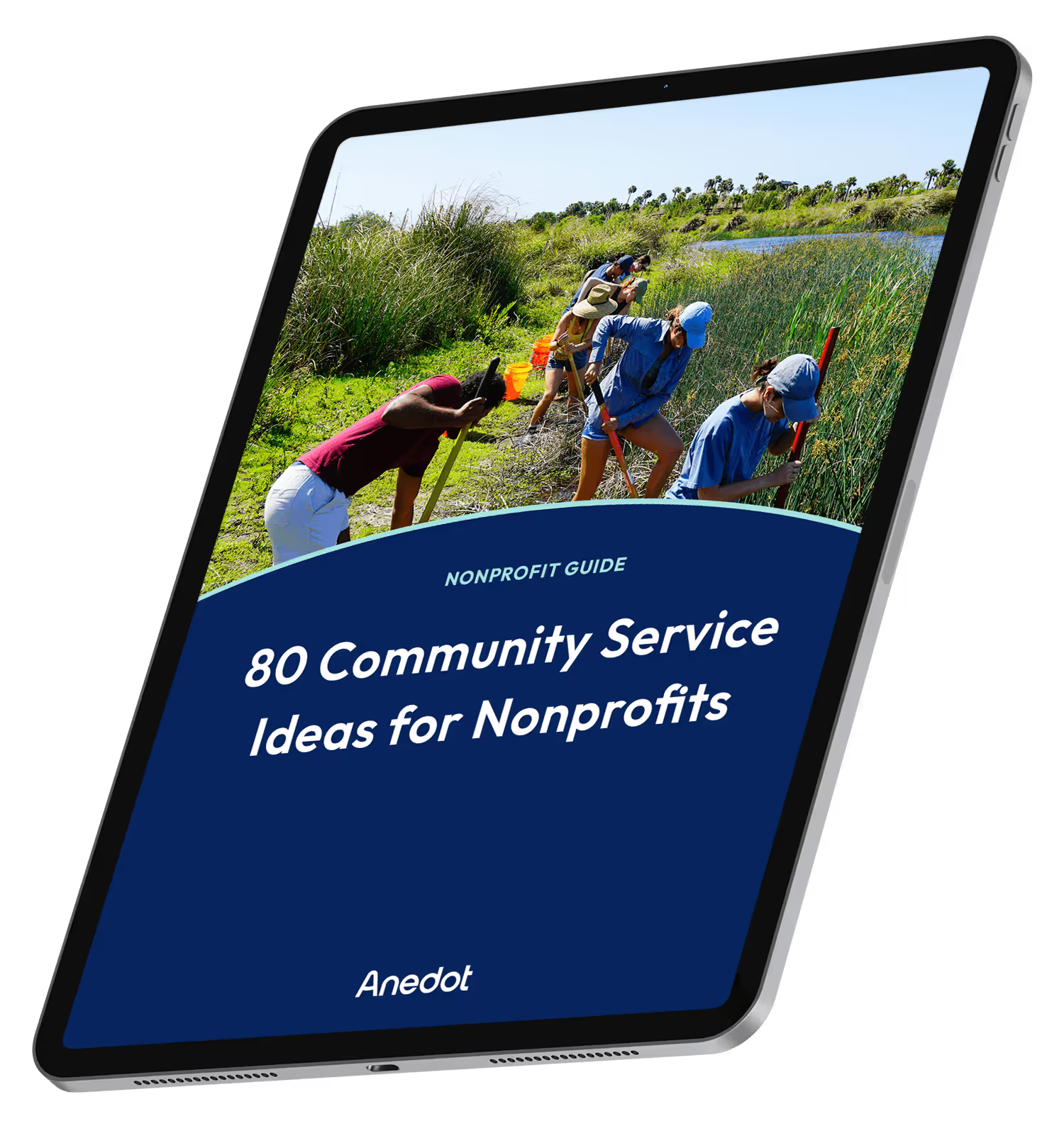
80 Community Service Ideas for Nonprofits
